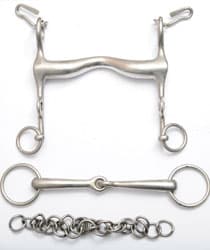
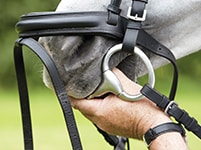
Choosing a bit for your horse doesn’t need to be complicated. The good news is that research shows that bitting is subjective, so it’s all about which bit suits you and your horse – there is no right or wrong answer.
If you are in the market for a new bit, or looking for a different style, check out our quick guide to choosing the correct bit for your horse.
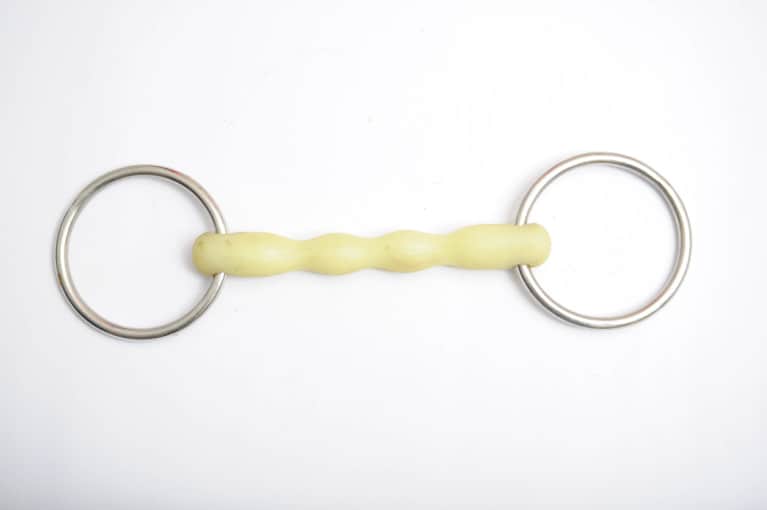
Loose-ring straight bar
Mouthpiece Straight bar, considered to be the mildest form of bit, particularly when made from rubber or plastic, as below.
Rings Loose ring, which allows the bit to rotate slightly before the action comes into play. Can promote chewing. Puts pressure on lips, tongue and bars.
Bit action: Mild
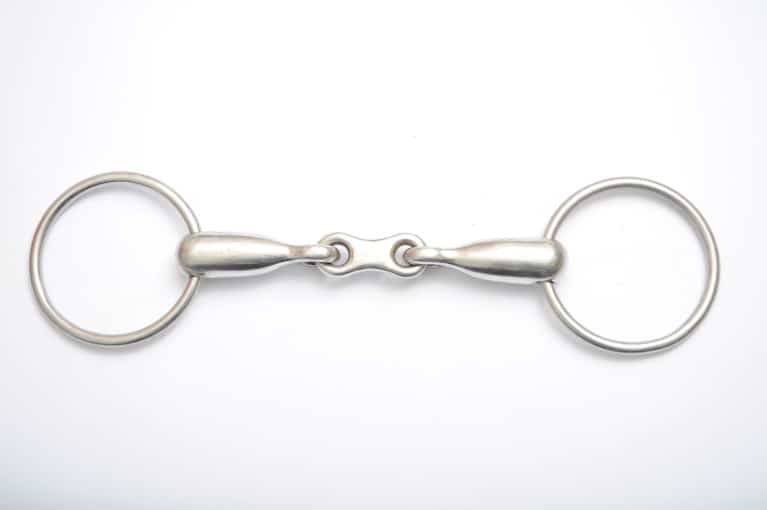
French-link loose-ring snaffle
Mouthpiece A double-jointed mouthpiece, such as a French link, is generally considered to be milder than a single joint. This is because it fits more naturally to the shape of a horse’s mouth and distributes pressure more evenly over the tongue.
Rings Loose ring.
Bit action: Mild
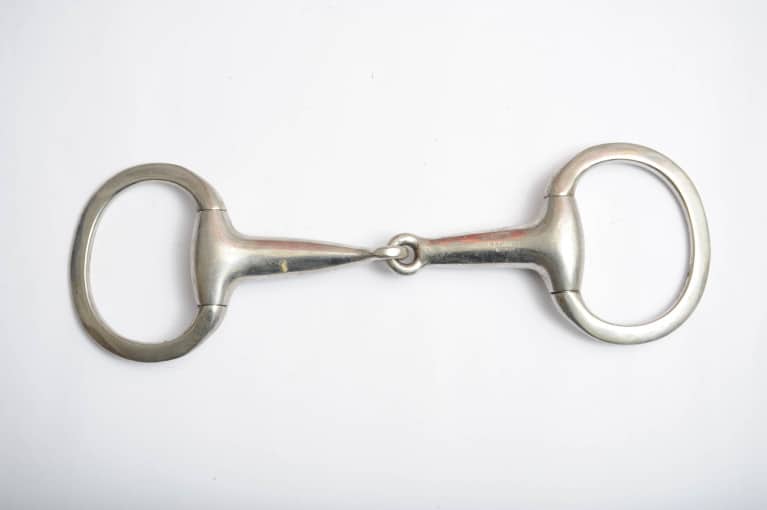
Single-jointed snaffle
Mouthpiece Single jointed, so applies pressure to the bars and greater pressure to the tongue than other mouthpieces.
Rings Fixed, so a more direct effect when the reins are used, causing lip, bar and tongue pressure.
Bit action: Mild
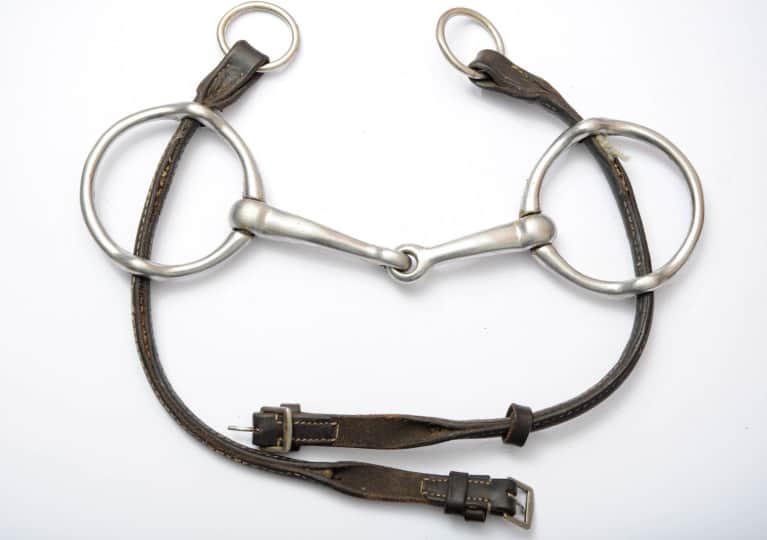
Cheltenham gag
Mouthpiece A Waterford mouthpiece is flexible so it’s difficult for horses to grab hold of or lean on. The movement can also encourage mouthing.
Rings The rings have holes that allow the runners to move freely through them. The top of the runners buckles onto the cheekpieces and the bottom attaches to the reins. The action can be quite severe, as rein tension applies poll and lip pressure, as well as action on the bars.
Bit action: Strong
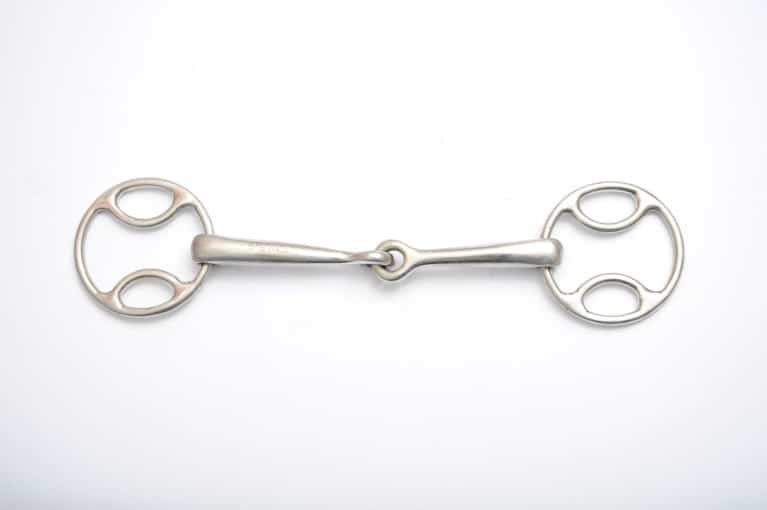
Beval snaffle
Mouthpiece Single jointed, which applies pressure to the lips, bars and more pressure on the tongue than other bits.
Rings Loose rings, with minor gag action. Your bridle’s
cheekpieces attach to the top ring and your reins attach to the bottom ring. This gives poll pressure, as well as bit pressure, when rein tension is applied.
Bit action: Medium
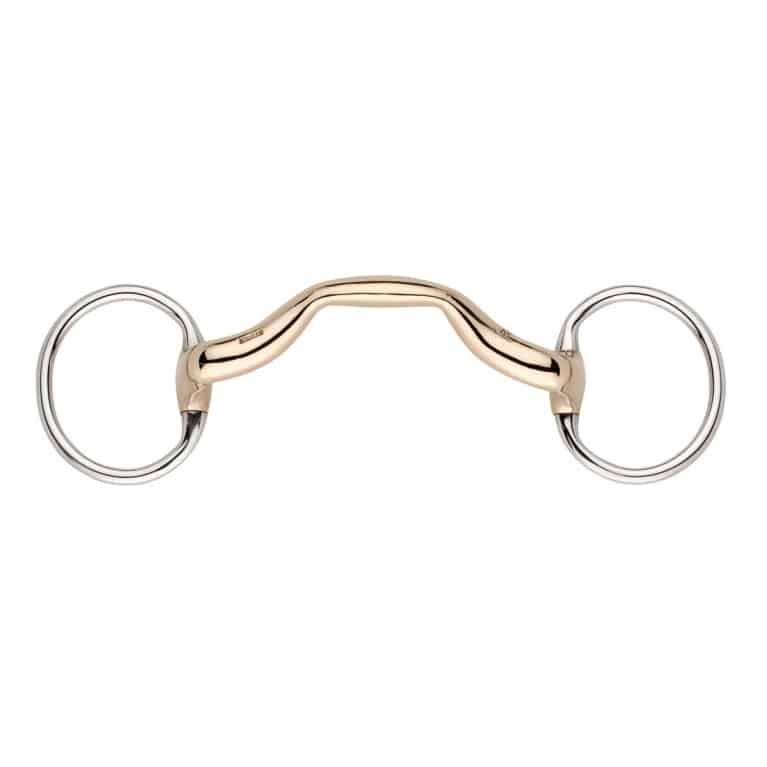
Sprenger KK Schooling bit
RRP: £177.92
Mouthpiece Ported to allow space for your horse’s tongue and made from Aurigan. Sprenger designed it as a transition between snaffle and Weymouth bits.
Rings Fixed, giving a more direct action on the bars when rein tension is applied.
Bit action: Mild
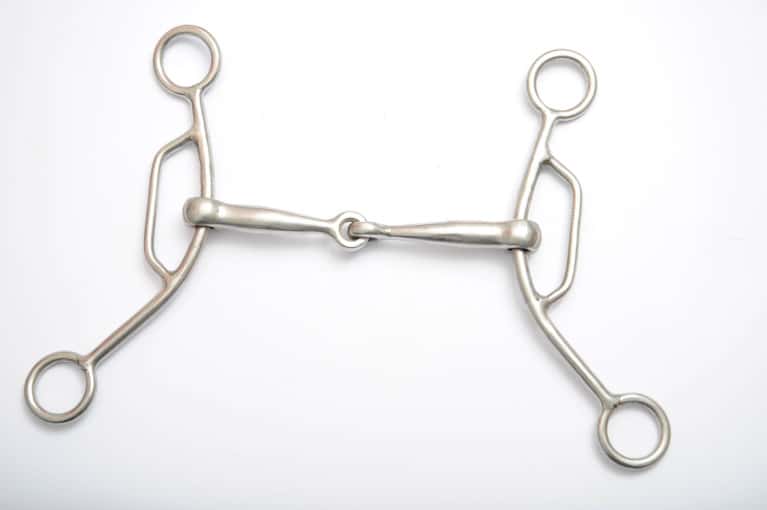
American gag
Mouthpiece Single jointed, which applies pressure on the lips, bars and more pressure onto the tongue than other bits.
Rings Top ring attaches to the cheekpieces of the bridle. Reins are attached to the bottom ring and when rein tension is applied, pressure is applied to the lips, bars and poll. Has quite a severe action, but not as severe as a Cheltenham gag.
Bit action: Strong
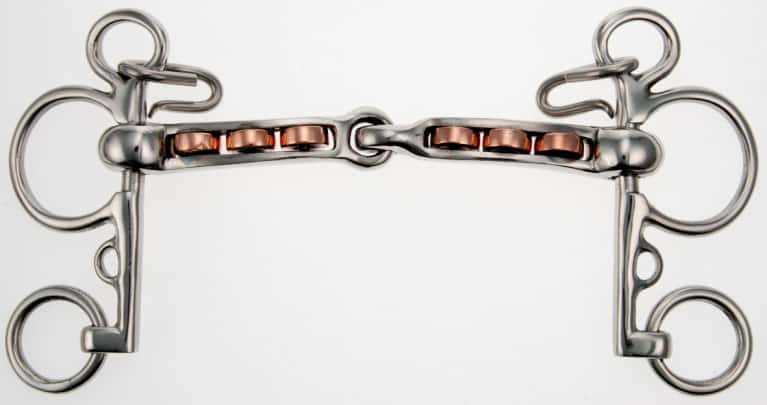
Abbey England Magennis Pelham
RRP: £80
Mouthpiece Single jointed, which was once considered to give a nutcracker action on the tongue, but studies have shown it actually just presses down into the tongue to a greater extent than other mouthpieces when rein tension is
applied.
Rings Can be used with one set of reins using a leather rounding between the two rings or two sets of reins, one on each ring. When used with two sets of reins, the top set will work like a jointed snaffle and the bottom set will give a stronger rotational action.This will bring the curb chain into action behind the chin. Used with roundings, it will have an action between the two.
Bit action: Strong
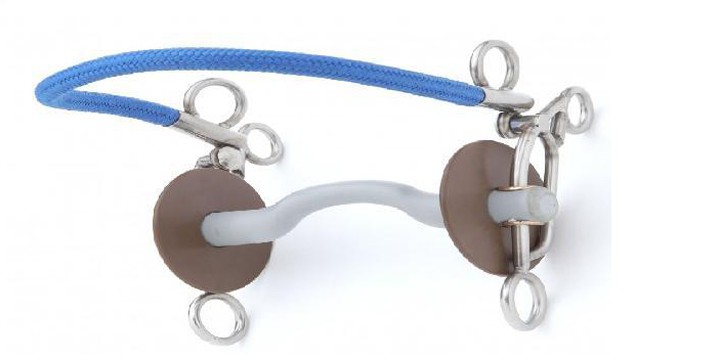
Beris Ported Tandem
RRP: £159.95
Mouthpiece Ported, which is designed to leave space for your horse’s tongue to sit comfortably underneath.
Rings The top rings in this picture would be attached to your bridle’s cheekpieces, the middle rings would have a curb chain or leather strap and the bottom rings are for your reins. When pressure is applied to the reins, bit pressure is applied to the lips and bars, nose pressure is applied by the front blue strap, lower jaw pressure is applied by the curb chain and poll pressure is applied through the twisting movement.
Bit action: Medium
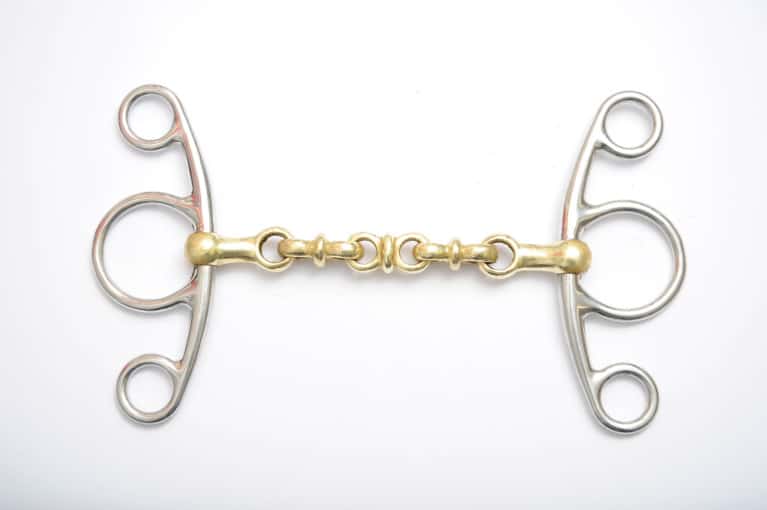
Waterford Jumper
Mouthpiece A Waterford mouthpiece is flexible, so it’s difficult for horses to grab hold of or lean on. The movement can also encourage mouthing.
Rings The cheekpieces from your bridle attach to the top ring. The reins can attach to the middle ring for a milder action on the lips and the bars, or the bottom ring for a more severe gag action, which works on the bars and the poll. It can also be used with roundings for an intermediate effect.
Bit action: Strong

Myler Combination
RRP: £110
Mouthpiece The rotation action of this bit and the loose ring
means that the bit action on the bars, tongue and lips is applied last, if the nose, jaw and poll pressure are not effective. In this situation, if the rider continues to pull on the reins the bit comes into action.
Rings The top ring attaches to your bridle’s cheekpieces and your reins attach to the bottom ring. When rein tension is applied, pressure is applied in equal thirds between the poll, jaw and nose, before the bit action comes in.
Bit action: Mild to medium
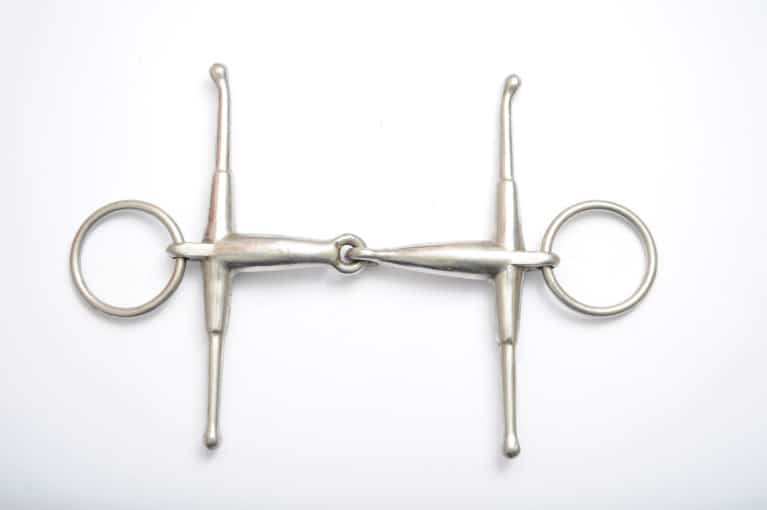
Full-cheek snaffle
Mouthpiece Single jointed, which applies pressure to the lips, bars and more pressure on the tongue than other bits.
Rings Loose rings, which allow movement. The full cheeks are good for young horses or horses who are diffi cult to steer, because as you ask for a turn, the cheeks press into the opposite side of the face, guiding the horse around.
Bit action: Mild
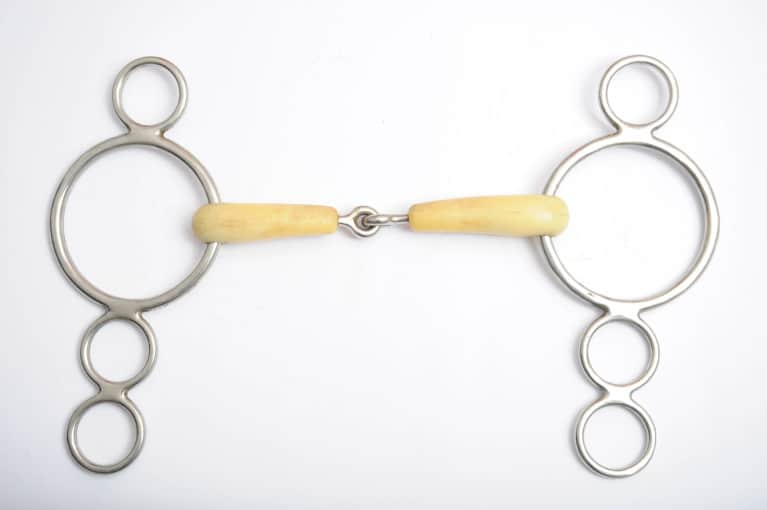
Dutch or three-ring gag
Mouthpiece Single jointed, so applies pressure to the bars and greater pressure to the tongue than other mouthpieces. It has a covering over the bit, which is designed to make it more comfortable in your horse’s mouth.
Rings Loose ring, which allows the bit to rotate slightly before the action comes into play. The movement can promote chewing. The top ring attaches to your bridle’s cheekpieces. The biggest ring has a mild action on the bars and poll. The next ring down applies slightly more pressure and the bottom ring applies the most.
Bit action: Mild to strong









